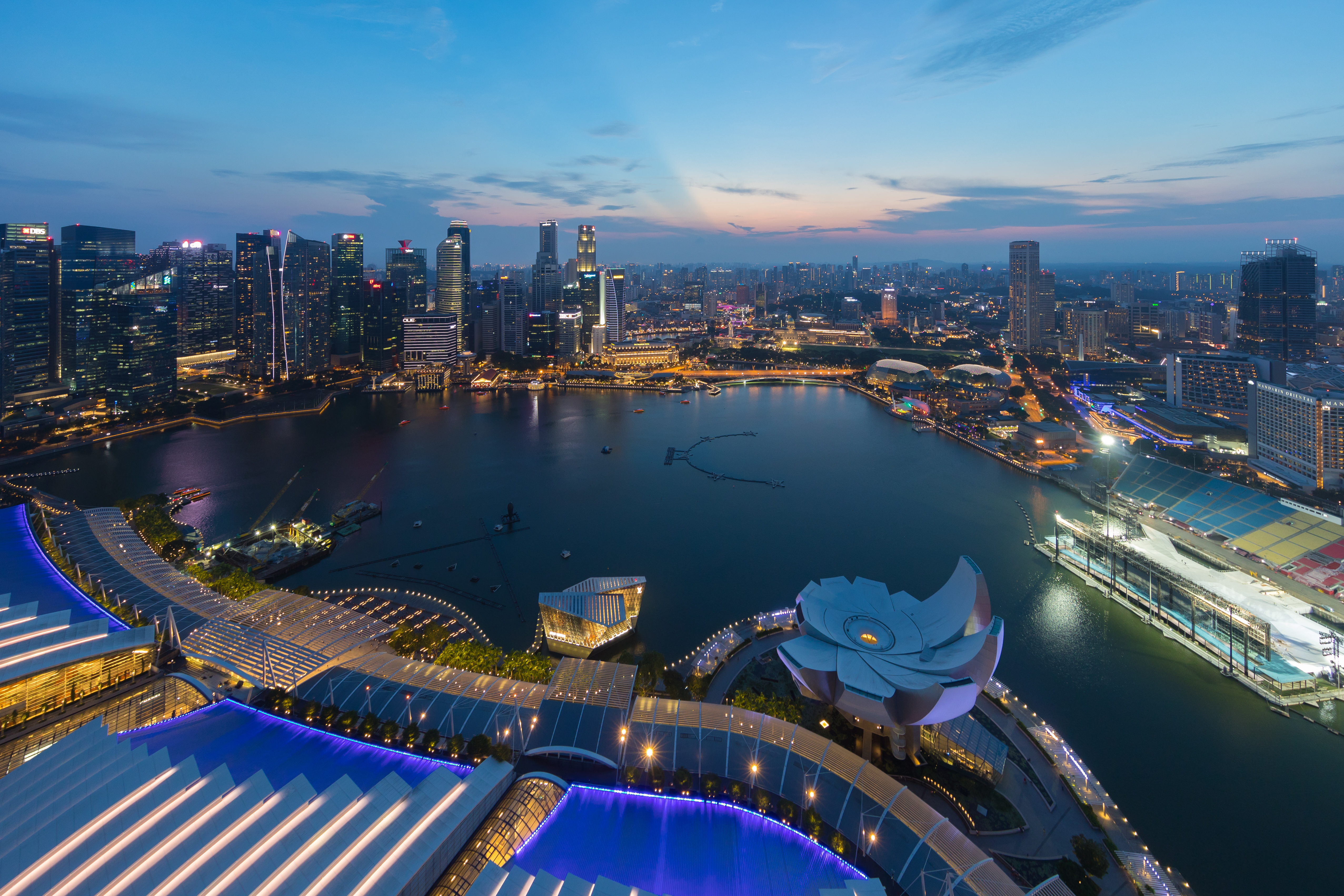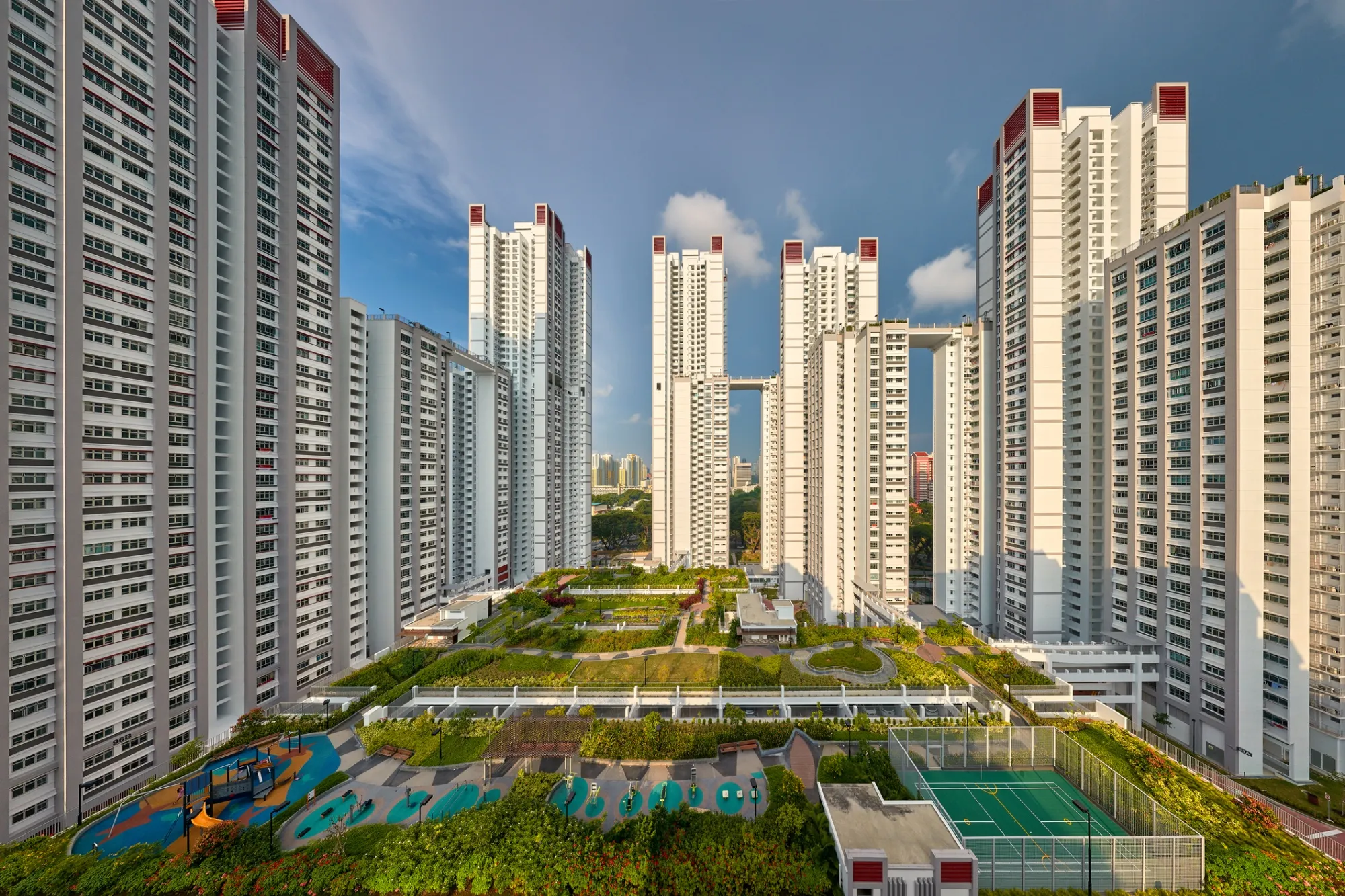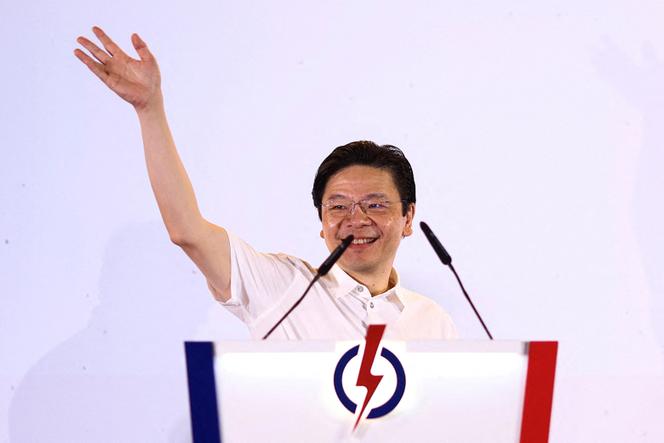
Singapore's PAP Secures Landslide Victory as PM Wong Navigates Economic Headwinds and Trump Tariffs
Singapore's Political Stability Collides With Global Headwinds
Wong's Landslide Victory Sets Stage for Economic Policy Shifts Amid Trade Tensions
SINGAPORE — As the sun rose over Singapore's central business district on Sunday, the island nation awoke to political certainty but economic ambiguity. Prime Minister Lawrence Wong's People's Action Party (PAP) secured a decisive mandate in the general election, capturing 87 of 97 parliamentary seats with 65.57 percent of the popular vote—a 4 percentage point improvement over their 2020 performance.

The results represent an emphatic endorsement of Wong, 52, who took office just a year ago after the retirement of long-serving leader Lee Hsien Loong, marking a pivotal transition away from the Lee family dynasty that has dominated Singapore politics for decades.
"This is a clear signal of trust, stability and confidence in your government," Wong told jubilant supporters at a press conference, his voice hoarse from campaign rallies. "The clear and strong mandate will put Singapore in a better position to face this turbulent world."
PAP Popular Vote Share in Singapore General Elections Over Time.
| Election Year | PAP Popular Vote Share (%) |
|---|---|
| 2025 | 65.57 |
| 2020 | 61.24 |
| 2015 | 69.9 |
| 2011 | 60.1 |
| 2006 | 66.6 |
| 2001 | 75.3 |
| 1997 | 65.0 |
| 1991 | 61.0 |
| 1984 | 62.9 |
| 1980 | 75.6 |
| 1976 | 72.4 |
| 1968 | 84.4 |
| 1963 | 46.93 |
| 1959 | 54.08 |
That turbulence looms large. The election unfolded against a backdrop of mounting economic pressures, including inflation concerns, housing affordability challenges, and perhaps most critically, the specter of new American tariffs implemented by President Donald Trump that threaten to disrupt Singapore's export-dependent economy.

"This election was fundamentally about economic security," said a veteran political analyst who has observed Singapore politics for three decades. "Voters chose the devil they know precisely because the external environment is so unpredictable."
Street's Reaction: Relief Rally with Caveats
Financial markets will likely deliver an initial positive verdict on the results when trading opens Monday. Investment bank analysts project a "relief pop" for the Straits Times Index (STI), potentially climbing toward the 3,900-3,950 range as political uncertainty evaporates.
Historical performance of the Straits Times Index (STI).
| Date | Close | Change | Change (%) | Open | High | Low |
|---|---|---|---|---|---|---|
| May 2, 2025 | 3,845.14 | +12.63 | +0.33% | 3,842.38 | 3,850.02 | 3,831.04 |
| April 30, 2025 | 3,832.51 | +27.33 | +0.72% | 3,811.72 | 3,832.51 | 3,801.73 |
| April 29, 2025 | 3,805.18 | -6.62 | -0.17% | 3,802.02 | 3,838.14 | 3,800.11 |
| April 28, 2025 | 3,811.80 | -11.98 | -0.31% | 3,821.37 | 3,821.68 | 3,797.17 |
"Singapore elections historically trigger a half to one standard deviation move in the STI when results are decisive," noted a prominent market strategist at a major Singapore bank. "But the sustainability of any rally depends entirely on how external headwinds develop, particularly U.S. trade policy."
Those headwinds are substantial. Economic forecasters estimate Trump's blanket 10 percent tariff on imports—with higher rates of 20-34 percent targeted at Chinese goods—could slash global GDP growth by approximately 0.3 percentage points in 2025, according to models from international financial institutions.
The Monetary Authority of Singapore (MAS) has already signaled its readiness to defend the Singapore dollar's nominal effective exchange rate (NEER) against "excessive volatility," suggesting policymakers anticipate two-way risks rather than straightforward appreciation.
Did you know? Singapore manages its monetary policy not through interest rates, but by steering the Singapore Dollar Nominal Effective Exchange Rate (S$ NEER)—an index that tracks the SGD’s value against a trade-weighted basket of currencies from its major trading partners. By adjusting the slope or position of an undisclosed policy band for the S$ NEER, the Monetary Authority of Singapore (MAS) controls inflation and maintains economic stability, making Singapore one of the few countries in the world to use exchange rate targeting as its primary monetary tool.
"The PAP's victory removes one uncertainty, but substitutes it with another," explained a Singapore-based forex analyst. "Now we wonder how aggressively they'll deploy their strengthened mandate to address structural economic challenges."
Economic Blueprint Takes Shape
Wong, an economist by training with a master's degree from the University of Michigan, now has political capital to implement potentially difficult economic reforms. As finance minister since 2021, he has already demonstrated his appetite for structural changes, including a controversial goods and services tax (GST) increase to 9 percent that opposition parties claimed has "turbocharged" inflation.
Singapore's Goods and Services Tax (GST) Rate History with Periods and Notes
| Period | GST Rate (%) | Notes |
|---|---|---|
| April 1, 1994 to December 31, 2002 | 3 | Initial implementation |
| January 1, 2003 to December 31, 2003 | 4 | First increase |
| January 1, 2004 to June 30, 2007 | 5 | Second increase |
| July 1, 2007 to December 31, 2022 | 7 | Stable period |
| January 1, 2023 to December 31, 2023 | 8 | Increase to support healthcare |
| January 1, 2024 to present | 9 | Further increase to support healthcare |
His economic strategy is likely to include several pillars:
First, accelerating Singapore's green transition through the Green Plan 2030, which includes ambitious targets for solar deployment, electric vehicle infrastructure, and carbon trading mechanisms.
Carbon trading often works through a "cap-and-trade" system, where a limit (cap) is set on total emissions. Companies receive or buy emission allowances within this cap and can trade them; those emitting less can sell their surplus permits to companies that exceed their allowance.
Second, enhancing social safety nets while maintaining fiscal discipline—a tricky balancing act that may require additional revenue measures.
Third, navigating the increasingly complex U.S.-China rivalry with pragmatic diplomatic and economic hedges.
"This mandate gives Wong room to pursue difficult but necessary reforms," said an economics professor at the National University of Singapore. "The question is whether he front-loads painful measures or phases them in gradually, particularly given external vulnerabilities."
Market participants anticipate a substantial "Budget 2026 shock-absorber package" featuring cash transfers, payroll subsidies for export-oriented small and medium enterprises, and green capital expenditure guarantees. This fiscal stimulus could be financed through additional special dividends from state investment company Temasek or potentially a targeted increase in top marginal income tax rates.
Opposition Progress Stalls
While the PAP extended its extraordinary winning streak dating back to 1959, the Workers' Party maintained its position as the sole opposition presence in parliament. The party retained Aljunied GRC, Sengkang GRC, and Hougang SMC, with modestly improved margins compared to 2020, but failed to make inroads in new constituencies despite mounting campaigns in several competitive districts.

The Workers' Party will hold 10 elected seats, supplemented by two non-constituency MP positions awarded for their close performances in Jalan Kayu SMC and Tampines GRC.
Did you know? Singapore’s Group Representation Constituency (GRC) system, introduced in 1988, requires voters to elect teams of 3 to 5 candidates—rather than individuals—with each team including at least one member from a minority ethnic group. This system ensures multiracial representation in Parliament and promotes social cohesion, but it has also drawn criticism for potentially favoring dominant parties by making it harder for smaller groups to contest due to the need for larger, ethnically diverse teams.
"We spread our strongest candidates too thinly across constituencies," acknowledged a Workers' Party strategist, speaking on condition of anonymity. "But we've proven our staying power in our core districts, and that's significant in Singapore's political context."
Smaller opposition parties fared poorly, with none coming close to securing representation, raising questions about the viability of a multi-party democracy in Singapore's future.
Sector Winners and Losers Emerge
Investment analysts have already begun mapping potential winners and losers from the election results combined with macroeconomic conditions.
Singapore's banking giants—DBS, UOB, and OCBC—will likely benefit from a higher-for-longer interest rate environment if Federal Reserve rate cuts stall, with attractive dividend yields exceeding 6 percent. However, loan growth may slow in tandem with an export slump, and net interest margins have likely peaked.
Did you know that Singapore's three major banks offer some of the most attractive dividend yields in the local market as of May 2025, with DBS leading at 6.6% (including special dividends), followed by UOB at 6.2% and OCBC at 5.9%? Even their regular dividend yields-5.3% for DBS, 5.69% for UOB, and 4.97% for OCBC-significantly outperform the Straits Times Index average, making them compelling income investments despite differences in valuation and distribution schedules (DBS pays quarterly while UOB and OCBC distribute semi-annually). Though DBS trades at a higher price-to-book ratio of approximately 1.9x compared to UOB and OCBC's 1.3x, all three banks maintain robust dividend policies that continue to attract income-focused investors in Singapore's financial landscape.
The green economy sector stands to benefit from accelerated government spending on Singapore's Green Plan 2030 initiatives, though project returns could suffer if U.S. tariffs dampen demand for regional carbon credits. Companies like Sembcorp Industries and Keppel Infrastructure Trust are positioned to capitalize on this trend.
Property developers face mixed prospects. A new flat pipeline of approximately 50,000 units should cap resale inflation, though asset reflation may continue in prime segments. The government's mandate could embolden fresh cooling measures once the post-election honeymoon ends, creating volatility in the sector.
Did you know that Singapore's Private Residential Property Price Index has maintained steady growth despite global economic uncertainties, increasing by 0.8% in Q1 2025 following a stronger 2.3% rise in Q4 2024, with the index reaching 209.4 points-representing an impressive 109.4% increase since the base period of Q1 2009? While growth is moderating compared to previous years (3.9% in 2024, down from 6.8% in 2023 and 8.6% in 2022), regional performance varies significantly across Singapore, with the Rest of Central Region leading recent gains at 1.7% while the Outside Central Region grew by just 0.3% in Q1 2025, and experts project continued moderate growth of 3-4% for 2025 with the index expected to reach approximately 241 points by 2026, supported by favorable interest rates and Singapore's robust economic outlook despite challenges from high construction costs and global geopolitical tensions.
Trade-linked industrials appear most vulnerable, with the Purchasing Managers' Index (PMI) already in contraction territory. Government subsidies may soften the blow, but margin erosion seems inevitable for companies like SATS, Yangzijiang Shipbuilding, and Venture Corporation.
Singapore Purchasing Managers' Index (PMI) recent trend.
| Month | Manufacturing PMI (SIPMM) | Status |
|---|---|---|
| April 2025 | 49.6 | Contraction |
| March 2025 | 50.6 | Expansion |
| February 2025 | 50.7 | Expansion |
"The market has already priced in some political certainty, but not the full spectrum of policy measures now available to a strengthened PAP government," said a chief investment strategist at a major Asian asset manager. "The real alpha will come from identifying which companies benefit from Wong's next-generation policy ambitions, especially in green infrastructure and digital trade corridors."
Stakeholders Recalibrate Expectations
The election outcome has prompted various stakeholders to recalibrate their expectations.
For multinational corporations, Singapore's political predictability remains attractive for regional headquarters, though many are exploring manufacturing shifts to nearby free trade zones in Johor (Malaysia) and Batam (Indonesia) to circumvent U.S. tariffs.
Local small and medium enterprises face compressed margins from both international trade friction and domestic cost pressures. Industry observers anticipate an uptick in mergers and acquisitions as stressed business owners sell to cash-rich government-linked companies.
Institutional investors, including sovereign wealth fund GIC and state investor Temasek, now have increased license to lean into market volatility. Financial analysts expect larger tactical allocations to U.S. Treasuries and ASEAN high-yield investments to harvest widened spreads.
(Comparison of Singapore’s Sovereign Wealth Funds: GIC vs. Temasek Holdings – highlighting their structure, purpose, and key features.)
| Feature | GIC (Government of Singapore Investment Corporation) | Temasek Holdings |
|---|---|---|
| Established | 1981 | 1974 |
| Ownership | Wholly owned by the Singapore Government | Wholly owned by the Singapore Government |
| Role | Manages Singapore’s foreign reserves | Commercial investment company |
| Asset Ownership | Does not own assets; acts as fund manager | Owns the assets it invests in |
| Investment Focus | Long-term global diversification (e.g., equities, bonds, real estate) | Equity in companies, both in Singapore and globally |
| Transparency | Less detailed public disclosures | Publishes annual financial statements |
| Contribution to Budget | Through Net Investment Returns Contribution (NIRC) | Through Net Investment Returns Contribution (NIRC) |
| Key Holdings | Not publicly disclosed in detail | Singtel, DBS, ST Engineering, etc. |
For ordinary Singaporeans, housing affordability and inflation remain primary concerns. Some political observers suggest that if the PAP fails to make meaningful progress on these issues by 2027, younger voters could swing several single-member constituencies in the next election cycle.

"Wong knows the honeymoon will be brief," said a former senior civil servant now working as a political consultant. "The mandate gives him runway, but Singaporeans expect tangible improvements in their cost of living. That's the implicit social contract."
Investment Strategies for a New Era
For investors navigating Singapore's post-election landscape, several strategic approaches have emerged:
A "green-fin-tech barbell" strategy involves taking long positions in Singapore Exchange-listed green bond ETFs while simultaneously investing in venture capital slots in MAS-backed carbon exchange startups.
Interest rate traders are eyeing Singapore dollar yield curve steepener positions—paying 1-year interest rate swaps while receiving 5-year—for investors who believe MAS will tighten monetary policy as fiscal spending boosts domestic demand.
A yield curve steepener is a trading strategy anticipating that the difference (spread) between long-term and short-term interest rates will widen, making the yield curve visually steeper. Traders execute this by taking positions, often using instruments like interest rate swaps or government bonds, designed to profit if long-term rates rise faster than short-term rates, or if short-term rates fall faster than long-term rates.
More speculative strategies include purchasing credit default swaps on select European luxury brands with high Singapore tourist exposure as a proxy hedge against any Temasek de-rating.
"The best risk-adjusted returns will come from optionality on PAP's next-generation policy ambitions," advised a senior portfolio manager at a global macro hedge fund. "But you need to balance that against structural challenges in the global trade landscape."
Looming Risks and Wildcards
Despite Singapore's reputation for stability, several downside risks could disrupt the post-election narrative.
A potential escalation of trade tensions, with U.S. automotive and semiconductor tariffs potentially rising to 25 percent, could push Singapore's GDP growth below 1 percent. Oil price spikes to $120 per barrel on Middle East tensions would fuel imported inflation, potentially forcing MAS to re-center its Singapore dollar band, with negative implications for rate-sensitive sectors.
Historical Brent crude oil price fluctuations, highlighting potential volatility.
| Year | Average Closing Price ($/Barrel) | Year High ($/Barrel) | Year Low ($/Barrel) | Year Close ($/Barrel) |
|---|---|---|---|---|
| 2024 | $80.52 | $93.12 | $70.31 | $74.58 |
| 2023 | $82.49 | $97.10 | $71.03 | $77.69 |
| 2022 | $100.93 | $133.18 | $76.02 | $82.82 |
| 2021 | $70.86 | $85.76 | $50.37 | $77.24 |
Domestically, a corruption scandal within a government-linked corporation could erode the PAP's trust premium faster than external economic headwinds. Regionally, a currency crisis involving the Indonesian rupiah or a hard landing in China's economy would test Wong's fiscal capacity and the central bank's foreign exchange intervention capabilities.
"Singapore's margin of safety is real, but thinner than the landslide vote suggests," cautioned a regional political risk consultant. "Wong has secured a strong mandate, but it comes with equally strong expectations for delivering economic security in an increasingly hostile global environment."
As Monday's market open approaches, investors are preparing for the collision between Singapore's newfound political certainty and intensifying global economic headwinds—a complex calculus that will determine whether the "Singapore premium" in asset valuations endures or erodes in the coming years.
